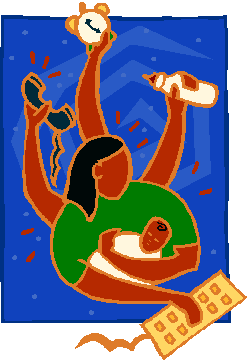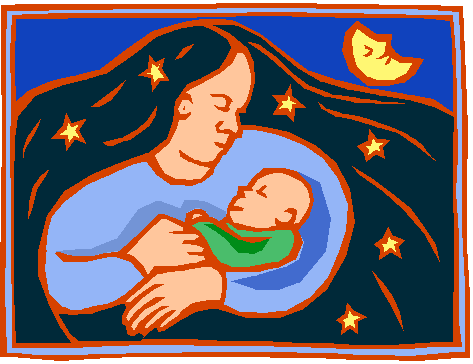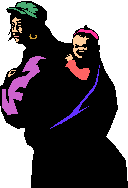












          |
   |
 |
 |
 |
|
Some children are born with or may develop physical and / or mental conditions which delay their normal growth and development. Many of these problems can be helped or completely corrected IF parents recognize the problem EARLY and SEEK HELP. Use the following checklist as a guide to help you know if your child could benefit from special help. |
| Birth to 6 Months | ||
| YES | NO | |
|
Birth to 3 months |
||
| Turns head side to side | ||
| Holds rattle for 5-10 seconds | ||
| Responds to speaking voice by stopping activity or change expression | ||
| Looks at face and eyes of person talking to him | ||
| Gabbles, coos when talked to | ||
| YES | NO |
3 to 6 months |
| Hold head steady | ||
| Rolls from back to side | ||
| Sits supported in a high chair with back straight | ||
| Actively waves, shakes, bangs and looks at a rattle/toy | ||
| Opens hand, plays with fingers, puts hands to mouth | ||
|
6 months to 12 months |
||
| YES | NO |
6 to 9 months |
| Sits without support/alone | ||
| Crawls and begins to pull up to a standing position | ||
| Lifts cup | ||
| Holds arms out to be picked up | ||
| Stares, cries or frowns at strangers | ||
| Says "da-da", "ba-ba" and "ma-ma" | ||
| YES | NO |
9 to 12 months |
| Makes stepping movement | ||
| Sits down from standing positions | ||
| Hold, bites and chews cracker or cookie | ||
| Responds to name | ||
| Stops activity when told "no no" | ||
| Jabbers with different voice levels | ||
| 12 to 18 months | ||
| YES | NO | 12 to 15 months |
| Walks 5 or more steps without falling | ||
| Scribbles in a back and forth motion | ||
| Asks for objects by pointing | ||
| Imitates words such as "doggie," "bye-bye" and cookie | ||
| Uses fingers to feed self | ||
| YES | NO |
15 to 18 months |
| Uses spoon with some spilling | ||
| Runs with the appearance of a hurried walk | ||
| Scribbles spontaneously | ||
| Looks at story books | ||
| Follow simple directtions | ||
| 18 months to 2 years | ||
| Pushes and pulls large toys/objects | ||
| Jumps with both feet together | ||
| Refers to self by name, uses "I", "You", "Me" (not always correctly) | ||
| Tells toilet needs occasionally | ||
| Takes off clothes with some help | ||
| Sits in chair without help | ||
| Points to pictures in book | ||
| Speaks in two-word sentences | ||
| 2 years to 3 years | ||
| YES | NO | 2 years to 2 1/2 years |
| Jumps from bottom step or low heights | ||
| Builds or stacks small blocks | ||
| Dries hands without help | ||
| Points to body parts (hair, eyes, nose, etc.) | ||
| Imitates drawing lines and circles (not always perfectly done) | ||
| YES | NO | 2 1/2 years to 3 years |
| Walks up and down stairs holding railing | ||
| Holds pencil with thumb and forefinger instead of fist | ||
| Joins in nursery rhymes and songs | ||
| Undresses completely without help | ||
| Source: The Early Learning Accomplishments Profile for Developmentally Young Children by M. Elayne, M. Ed | ||
After completing this checklist, if you have any questions or concerns regarding your child's development, contact your pediatrician and / or call Project Child at 1-800-322-8174 or the Early Intervention Program nearest you.
Facts
|
Shortcut to Healthy Hearts
|
Annual Physical
|
Blood Pressure
|
Blood Pressure Log
|
Blood Pressure Monitoring
|
Taking Medicines Safely
|
Medicines Record
|
Menopause
|
Caregiver Support
|
Care Plan
|
Child Development Checklist
|
Safety Checklist for
Infants and Toddlers
|
Improve Doctor–Patient Communication
|
Path for a Healthy Heart
|
Taking Coumadin
|
Get Smart About Smoking
|
How to Quit Smoking
|
Heart Wellness
Disclaimer | Donate Now | Contact Us | Site Map | Store ©1999-2000; updates: 2002, 2004, 2005, 2007 Women's Heart Foundation, Inc. All rights reserved.
Unauthorized use prohibited. The information contained in this Women's
Heart Foundation (WHF) Web site is not a substitute for medical advice or
treatment, and WHF recommends consultation with your doctor or health care
professional.